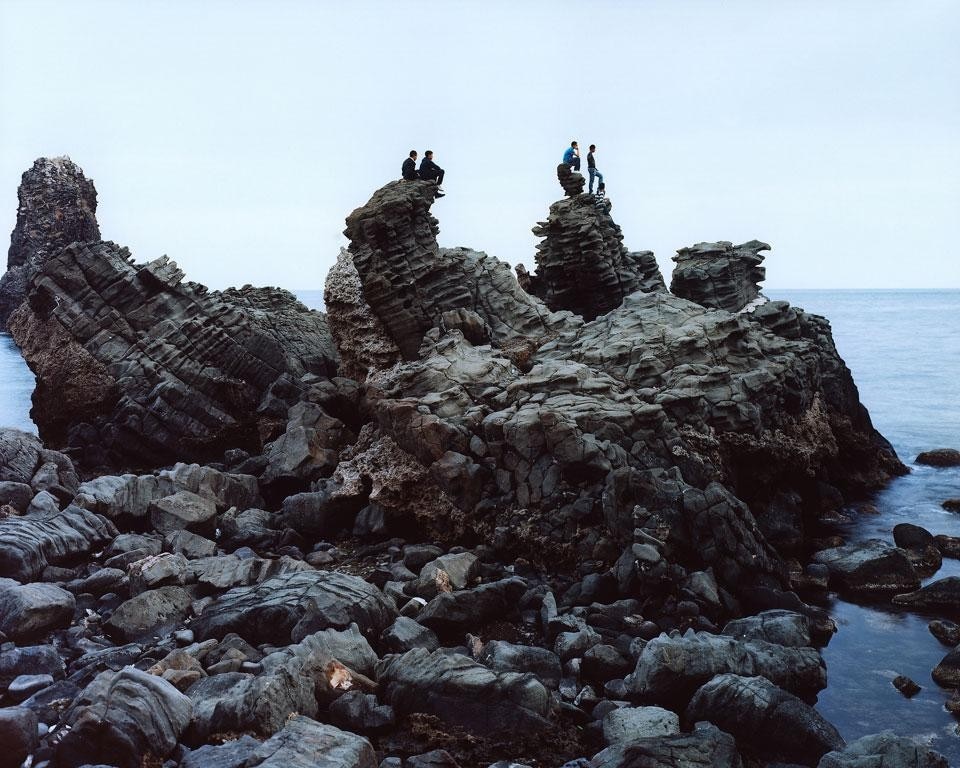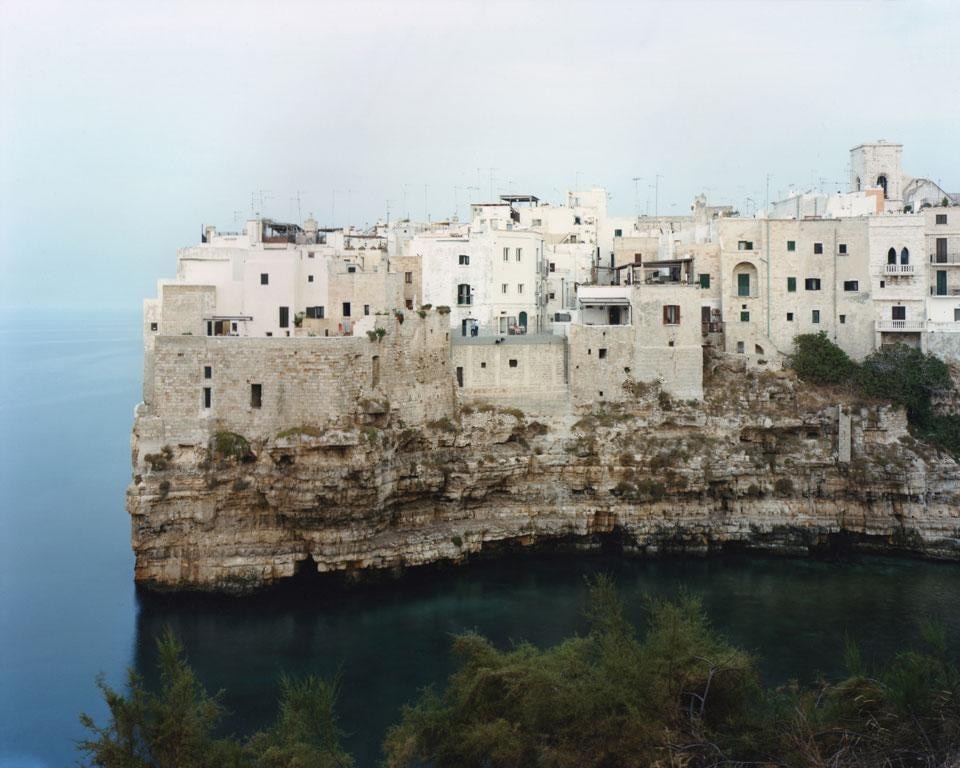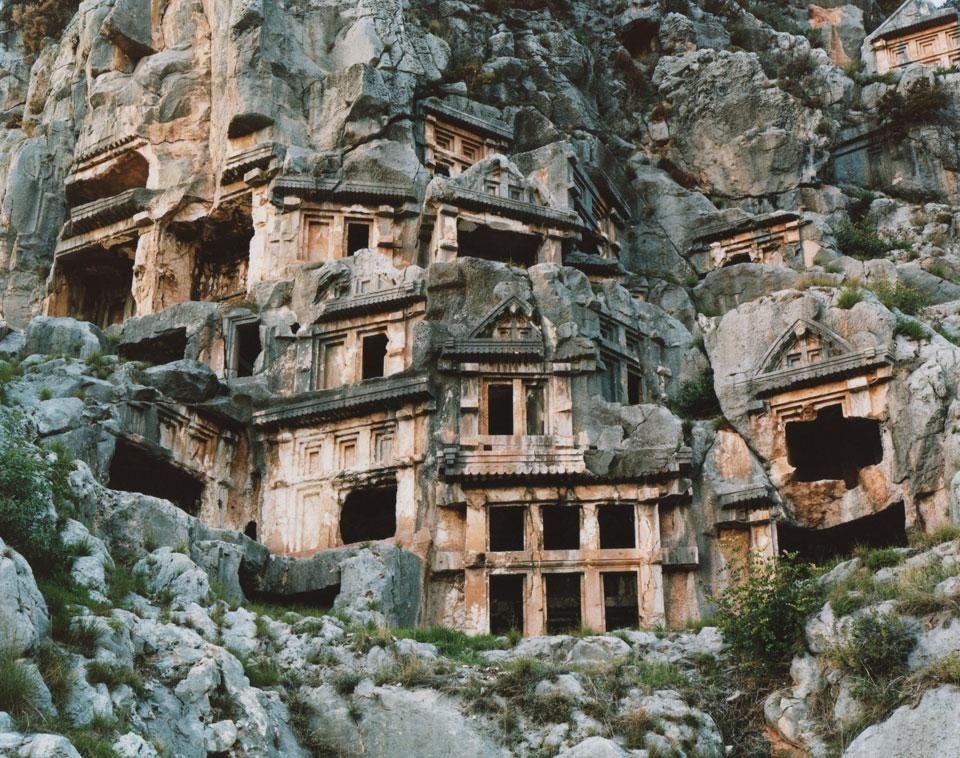In the ancient Turkish city of Myra, Milella has photographed spectacular tombs that are carved into stone cliffs, as if they were part of the mountain. Another image depicts a sanctuary in Phrygia, a lime stone formation filled with ancient holes, shaped by both natural and human interaction. A place of refuge, of spiritual purpose and sacrifice, the sanctuary encapsulates Milella's enquiry into an identity which is simultaneously archaic and contemporary.
The fallen ruins of the Greco-Roman theatre of Termessos stand at 1600 metres above sea level and almost appears to be part of and contained by the Taurus mountains that surround them. They have endured over two thousand years of elemental weathering, frozen in time on the day the city was abandoned. The idea of durability and the passage of time on language and culture are also present in the image of the cemetery at Van, a city on the border between Turkey and Iran. Muslim graves stand in a snowy field. Their height and dark, monolithic presence make them appear like the skyline of a modern city. Inscribed with Selgiuchid writings, the graves are an architectural model of time, of memory and of survival.

For Milella, "making images doesn't only mean documenting or taking photographs. It's also a possibility for contemplation and recollection. Building an image of the past is to face the present, and activate the possibility of the future." The photographer has documented modern apartment blocks, bunkers left from the Second World War and industrial waste lay alongside olive fields, crumbling churches and the wild Adriatic Sea. Originally from Bari, the city is a continuous subject for Milella, who has also made work in Mexico City, Cairo, Ankara, Anatolia, Sicily, Tunisia, Mesopotamia and Turkey.

Domingo Milella
Brancolini Grimaldi
43-44 Albemarle Street, London



